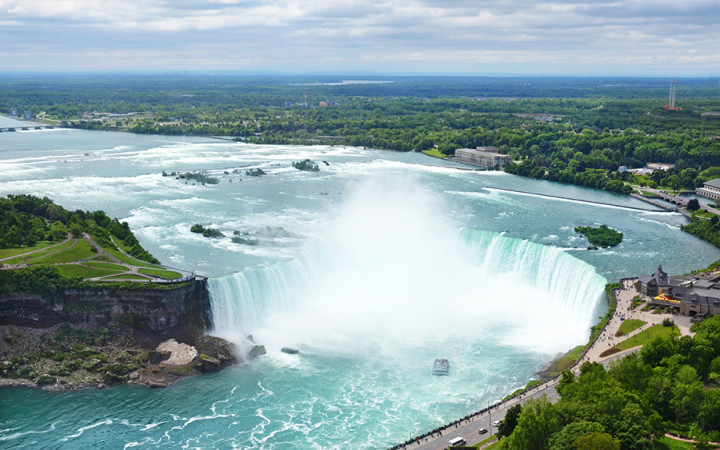Today’s Wonder of the Day was inspired by Arianna. Arianna Wonders, “How are waterfalls formed?” Thanks for WONDERing with us, Arianna!
Close your eyes and imagine that you were one of the first Native Americans to explore the area that is now Buffalo, New York. As you traveled farther north along the Niagara River, you began to hear a distant roaring sound.
What could it be? Does some humongous beast lie in wait ahead? Your curiosity gets the best of you and you press onward. The roar continues to grow louder and louder until the mystery finally reveals itself: Niagara Falls!
Niagara Falls is certainly one of the most amazing sights that Earth has to offer. The sheer volume of water that cascades over the falls every second is mind-boggling.
Earth has several other incredible waterfalls that are just as impressive as Niagara Falls, but there are also thousands upon thousands of waterfalls on rivers, streams, and creeks all over the world. How exactly do all these waterfalls form?
Let's consider a river as it travels over different types of rock over its course. Water is a powerful erosive agent, and different types of rock erode at different rates. For example, a river may flow over both hard rock that erodes slowly (such as granite) and softer rock that erodes more quickly (such as shale).
As softer rock erodes away more quickly, the course of a river will become steeper as it moves beyond the hard rock layer toward the softer rock. The steeper the course of the river becomes, the more the erosion of the softer rock will accelerate as the river moves faster due to gravity.
Over time, this process continues until the steepness between the hard and softer rock layers becomes nearly vertical. At that point, a waterfall has been created! The differential erosion of hard and softer rock layers continues on, making the waterfall taller and the area where the waterfall lands (called the plunge pool) deeper.
Water may also continue to erode the softer rock directly under the hard rock layer. If this undercutting action continues, it may eventually result in a waterfall that you can walk behind. Over time, the overhanging hard rock layer will eventually collapse, causing the waterfall to retreat upstream to what remains of the hard rock layer.
The many different types of waterways and the differential erosion of the types of rock they flow over results in waterfalls in all sorts of shapes and sizes. Over the years, scientists have given names to many different types of waterfalls, including cascade, block, cataract, chute, fan, scree, slide, ribbon, horsetail, punchbowl, tiered, segmented, and plunge.
While erosion is the primary process that creates waterfalls, scientists note that other natural, cataclysmic events (such as earthquakes, landslides, glaciers, and volcanoes) may also create waterfalls.
Not all waterfalls have water flowing over them at all times. Rivers and streams change course over time and may leave some waterfalls dry except for periods of heavy rain or after snow melts in the spring. These waterfalls are known as seasonal waterfalls.




